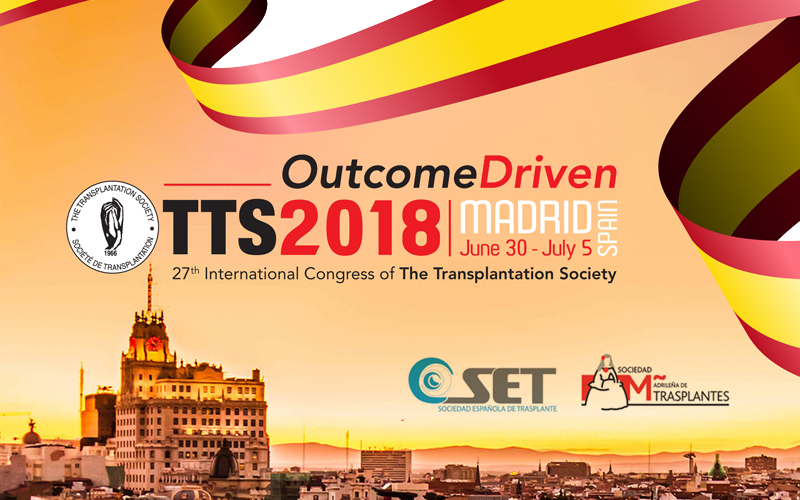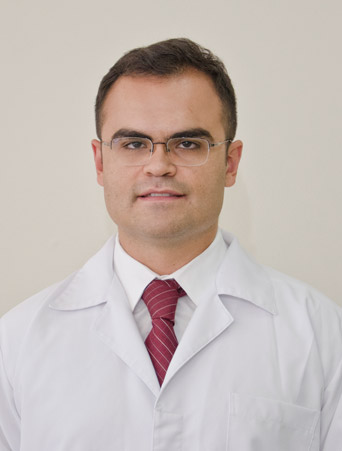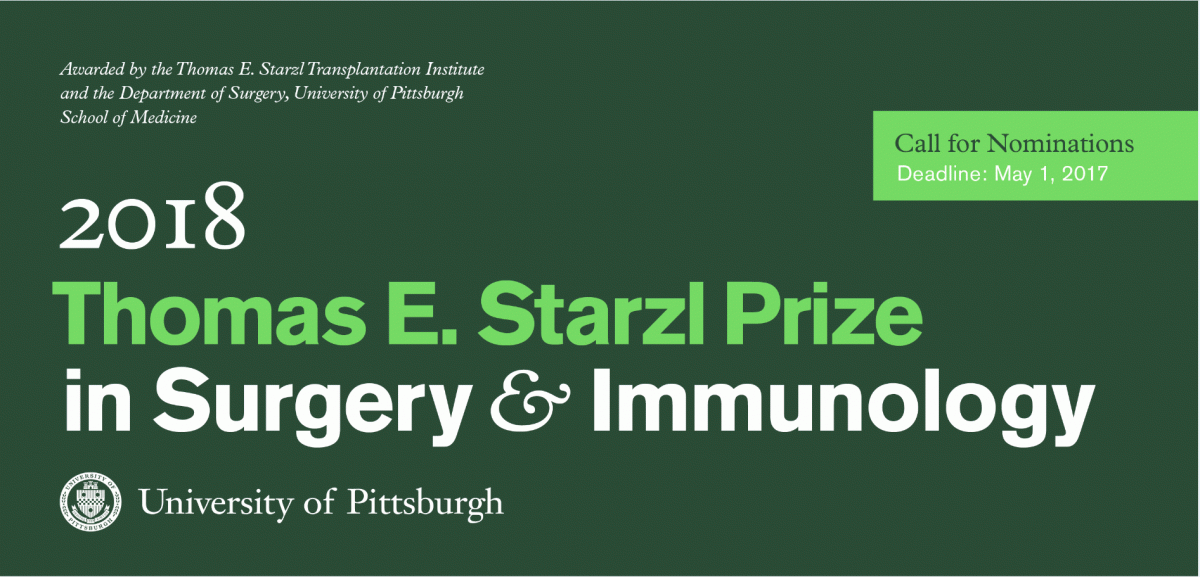
TTS 2018 COngress - new dates and CALL FOR TOPICS AND IDEAS (by April 24)
TTS Council Retreat March 23-24, 2017, Vancouver, Canada (from left to right): Stefan G. Tullius, Minnie Sarwal, Peter Stock, Peter Friend, Elmi Muller, Gillian Hughes,Raja Kandaswamy, Claus Niemann, Jeremy Chapman, Philip O’Connell, Nancy Ascher, Randall Morris, Mehmet Haberal, Hiroto Egawa, Marcelo Cantarovich, Medhat Askar, Gabriel Gondolesi,Kumad Dhital, Ifeoma Ulasi, Alejandro Nino Murcia.
TTS 2018 - NEW DATES
During the recent TTS Council Retreat (March 23-24), held in Vancouver - Canada, the TTS Council agreed that the TTS 2018 Congress should be held earlier than originally planned to facilitate greater participation from European members.
The Congress will now be held from June 30 to July 5, 2018 at the IFEMA Congress Centre in Madrid, Spain.
Stay tuned for our congress website launch (to be announced in a future issue of the Tribune Pulse).

TTS 2018 - CALL FOR TOPICS AND IDEAS
Your opinion is important to us! The Scientific Program Committee of TTS 2018 invites YOU to submit your ideas and recommendations for the program by April 24, 2017.
CLICK HERE TO TAKE THE SURVEYThe SPC is looking for feedback in the following areas:
Keynote presentation topics should be applicable to a great majority of the audience and not focus on a niche topic. This year's program theme is OUTCOME DRIVEN. This theme would ideally be reflected in the presentation.
General presentation topic suggestions will be provided to the State-of-the-Art leads for the planning of SOTA sessions and Early-Morning Symposia.
Innovation. TTS 2018 is eager to highlight innovative presentations. You have the opportunity to propose a session / presentation that is novel. This implies that the topic is not currently listed as one of the SOTA topics and has never been part of a TTS meeting. It is assumed that you, as the submitter, would be the session organizer.
Feedback. Please share your general ideas and recommendations regarding the program and the congress at large (poster sessions, mobile app, catering, competitions, exhibits etc.).

INTRODUCTION
Outcomes of kidney, liver and pancreas transplantation have improved progressively over time. Currently, 90% one-year survival and nearly 75% five-year survival have been achieved by several transplant programs worldwide. The main initial obstacles to success of transplantation were ethical, technical and immunological.
HISTORICAL AND CURRENT BARRIERS TO LIVER TRANSPLANTATION
Dr. Thomas E. Starzl, the father of modern liver transplantation and also a great contributor to kidney, pancreas, intestinal and multivisceral transplantation, has passed away recently. Dr. Starzl has overcome ethical barriers to establish the concept of brain death. Starting in 1963, Dr. Starzl performed the first series on successful liver transplantation at the University of Colorado in Denver, USA.1
In the 1960’s and 70’s, outcomes of liver transplantation were dismal and only few liver transplants were performed worldwide. Immunologic obstacles to long-term success of liver transplantation were immense until 1979, when Sir. Roy Calne, a British surgeon largely involved in the establishment on the concept of brain death, pioneered utilization cyclosporine in kidney, pancreas and liver transplantation..2 Starzl et al. have combined cyclosporine to steroids, improving the results of liver and kidney transplantation..3-4 During the 1980’s, US Food and Drug administration (FDA) approved the use cyclosporine in the USA, and number of liver transplant programs increased. Liver transplantation also was disseminated outside the USA and England, with opening of programs in other European Countries and also in South America.
Dr. Starzl’s group at the University of Pittsburgh also was responsible for introducing the calcineurin inhibitor tacrolimus (FK506) in liver transplantation.4 FK506 enabled improvement on the outcomes of liver transplantation in patients suffering from cholestatic diseases. Driven by its successful outcomes, liver transplantation was disseminated as the standard of care for the treatment of patients with end-stage liver disease worldwide.
In 1988, Raia, Nery and Mies from University of Sao Paulo performed the first two successful living donor liver transplants (LDLTs) in the World.5 Broelsch et al. pioneered this practice in the United States.6 LDLT remains as the main modality of liver transplantation for small infants suffering from end-stage liver disease in the Western World.7 Due to cultural reasons, deceased donation is scarce in the Eastern World. LDLT also is the most common modality of liver transplantation in Asia. Currently, donor partial hepatectomy has been performed laparoscopically in few institutions.8
Liver preservation was another barrier to the progress of liver transplantation until late 1980’s. In 1988, Belzer’s group reported on liver transplantation utilizing the University of Wisconsin preservation solution (UW).9 UW replaced EuroCollins solution, thus enabling longer and safer preservation of liver, kidney and pancreas allografts, and contributing to improvement of outcomes of transplantation. Although UW is still considered the standard of care in the United States and in several countries worldwide, Adam et al. recently reported that liver transplantation using Institutes Georges Lopez-1 preservation solution (IGL-1) provided liver transplantation outcomes that were similar to those obtained with UW.10 This study, a report from the European Liver Transplant Registry, compared results of liver transplantation using four different preservation solutions: UW, IGL-1, Celsior and Histidine-tryptophan-ketoglutarate (HTK). Outcomes of liver transplantation using UW and IGL-1 were slightly superior to those obtained with HTK, especially in the setting of prolonged cold ischemia times.10 IGL-1 also was employed successfully for human pancreas transplantation, and provided outcomes that were similar to those obtained with UW for kidney transplantation.11-12
Static cold storage has been the standard of care for liver, kidney and pancreas transplantation worldwide. High-risk lung allografts have been reconditioned by dynamic preservation (ex-vivo normothermic lung perfusion). Recently, dynamic preservation has been employed for preservation of liver and kidney allografts. There are two different methods of dynamic preservation: hypothermic machine preservation and normothermic machine preservation. Although related to increased costs, normothermic perfusion of liver allografts has been demonstrated as clinically feasible.13 Normothermic liver perfusion has been capable of improving laboratory perfusion parameters of marginal organs.14 It is yet to be proven whether normothermic perfusion will be able to recondition high-risk livers to the point of enabling successful transplantation using such suboptimal allografts.
Although liver allocation was largely improved by adoption of Model for End-Stage Liver Disease (MELD) score in early 2000’s, the disparity between donor demand and supply always has been a concern in abdominal solid organ transplantation.15 Besides partial liver grafts from live donors, livers removed from patients with familial amyloid polyneuropathy undergoing liver transplantation (domino liver transplants) promoted a small increase in the donor pool. Utilization of liver allografts procured from non-heart beating donors [deceased after cardiac death donors (DCD donors)] has contributed to a considerable increase the donor pool in the United States and in some European Countries, currently providing outcomes that are nearly as good as those obtained by the use of livers from brain dead donors.16-17
Liver transplantation is an expensive medical practice. Reducing the costs related to liver transplantation is largely desired. The Mayo Clinic Florida Liver Transplant team has established a score that predicts the need for Intensive Care Unit (ICU) stay immediately following liver transplantation. Impressively, over half of all liver transplant recipients at Mayo Clinic Florida currently are extubated in the operating room and discharged directly to ward, eliminating the need for ICU stay.18
Extensive portal vein (PV) thrombosis (Grade 3, complete thrombosis of both PV and proximal superior mesenteric (SMV) vein with open distal SMV; Grade 4, complete thrombosis of PV and proximal and distal SMV) is a relative contraindication to liver transplantation. For grade 3 PV thrombosis, whenever eversion thromboendovenectomy is not accomplished, interposition of a venous graft between SMV and PV of the liver allograft may be a feasible solution. For Grade 4 PV thrombosis, utilization of portomesenteric venous system of the recipient usually is not feasible. Anastomose PV to a collateral shunt, construct a renoportal bypass.19 arterialize PV,20 perform cavoportal hemitransposition21 and multivisceral transplantation22 are potential therapeutic options. Complications of renoportal bypass may include thrombosis, renal failure, and transient ascites. PV arteralization may be complicated by PV pseudoaneurysm. Among the available options for liver transplantation in the setting of Grade 4 PV thrombosis, multivisceral transplantation is the only procedure that completely reverses portal hypertension while addresses primary disease.22
CURRENT BARRIERS TO KIDNEY TRANSPLANTATION
Renal transplantation in the setting of complete inferior vena cava thrombosis also can be problematic. In such instances, a collateral venous branch utilized as the site of the renal vein venous anastomosis.23 Other suitable options for establishing venous outflow to renal allograft may include mesenteric veins and IVC.
Renal retransplantation is a standard of practice worldwide. Iliac vessels contralateral to the ones utilized on the first renal transplant are generally employed for renal retransplantation, providing results that are superior to ipsilateral renal transplantation.24 However, in the setting of a third renal transplant or in the setting of renal retransplantation after prior simultaneous kidney and pancreas transplants, both iliac fossae have been used for prior transplants, and the placement of the new allograft can be problematic. A feasible solution to address this problem may be using an alternative technique in which nephrectomy of the failed allograft is performed, and the renal vessels of the failed allograft are preserved and utilized for transplantation of the new allograft.25 The same technique may be employed in the setting of renal retransplantation in the setting of severe bilateral aortoiliac atherosclerosis.
Highly HLA-sensitized end-stage renal failure patients comprise a challenge to successful kidney transplantation. Such dialysis patient population faces immense difficulties searching a compatible donor. Paired donation has been increasingly performed in the United States. However, paired donation is not possible in several countries. ABO-incompatible and positive-crossmatch kidney transplantation may be suitable options for successful kidney transplantation in highly sensitized patients. Desenstization by plasma exchange and/or intravenous immunoglobulin usually is performed prior to positive-crossmatch kidney transplantation. Utilization of Eculizumab, a humanized monoclonal antibody directed against complement component C5, may be performed in conjunction with pre-transplant plasma exchange in recipients of living-donor kidney allografts who have high levels of donor specific antibodies (DSAs).26 A recent multicenter US study has associated positive-crossmatch kidney transplantation to an improvement in patient survival as compared to being waitlisted for a compatible deceased dono.27 Although being generally successful, positive crossmatch kidney transplantation is associated to a high incidence of acute humoral rejection. Plasma exchange, Rituximab, Eculizumab, and the preoteosome-inhibitor Bortezomib are suitable medical options for the treatment of antibody-mediated rejection. Medical treatment rarely fails to control rejection. In such instances, either splenectomy or spleen irradiation may provide control for antibody-mediated rejection because the spleen is a large plasma cell reservoir.28-29
Nowadays, renal transplantation commonly has been performed simultaneously to other solid organ transplants (ex. simultaneous liver-kidney transplantation, simultaneous pancreas-kidney transplantation, simultaneous heart-kidney transplantation). Performance of crossmatch is not necessary before liver transplantation. However, crossmatch should be performed in the setting of simultaneous liver and kidney transplantation. Although performance of liver transplantation simultaneously to kidney transplantation usually confers protection to kidney allograft against rejection,30 hyperacute antibody-mediated rejection with loss of the kidney allograft still may occur in rare instances.31
(references are located at the bottom of this article)
About our guest editor
Marcio F. Chedid, MD, PhD
Attending Transplant and Oncological Surgeon,
Hospital de Clinicas de Porto Alegre,
Federal University of Rio Grande do Sul (UFRGS),
Porto Alegre, Brazil
DR. Marcio F. Chedid obtained his Medical Doctor degree by the Federal University of Rio Grande do Sul (UFRGS) in Porto Alegre, Brazil in 2004. DR. CHEDID concluded a five-year General Surgery and Surgical Oncology Residency at Hospital de Clínicas de Porto Alegre - UFRGS in 2010. He obtained ECFMG certification and worked as a Clinical Fellow at the Division of Abdominal Transplantation Surgery of Mayo Clinic in Rochester, Minnesota USA, from 2011 to 2013. DR. Chedid also was a Visiting Scholar at the Department of Surgery of the Washington University in Saint Louis 2014.
DR. Chedid then returned to his home country Brazil to work as Attending Surgeon at the Division of Gastrointestinal Surgery and Liver and Pancreas Transplantation of Hospital de Clinicas de Porto Alegre (UFRGS), at his hometown Porto Alegre 2014. His current main activities are to perform transplants and hepatobiliary operations. He was the first surgeon to report on successful performance of human pancreas transplantation utilizing IGL-1 preservation solution (https://www.ncbi.nlm.nih.gov/pubmed/27163542).
As a former Professor of Human Anatomy, DR. Chedid co-edited a textbook about human anatomy of the abdomen - Anatomia Clínica e Cirúrgica do Abdome - that was published by the UFRGS university press. He has obtained a Ph.D. degree in Surgical Sciences and has authored/co-authored over 35 scientific articles in surgery and medicine. His main interest is researching ways of improving the outcomes of pancreas, liver and kidney transplantation. DR. CHEDID has worked as a reviewer for Transplantation journal, American Journal of Transplantation and also for Clinical Transplantation journal.
Link to Dr. Marcio F. Chedid’s CV: http://lattes.cnpq.br/7710366700138702
Call for nominations
The Thomas E. Starzl Transplantation Institute is accepting nominations for the 2018 Thomas E. Starzl Prize in Surgery and Immunology, awarded annually to a national or international leader in the field of organ transplantation and immunology.
CLICK HERE FOR DETAILS
Upcoming Meeting Deadlines
ISODP 2017 - APRIL 21
ABSTRACT SUBMISSION DEADLINE
INTERNATIONAL SOCIETY FOR ORGAN DONATION AND PROCUREMENT (WWW.ISODP2017.ORG) - September 6-9 - Geneva, Switzerland
ISVCA 2017 - APRIL 30
ABSTRACT SUBMISSION DEADLINE
13TH CONGRESS OF THE INTERNATIONAL SOCIETY OF VASCULARIZED COMPOSITE ALLOTRANSPLANTATION (WWW.ISVCA2017.ORG)
SALZBURG | AUSTRIA, OCTOBER 26 - 27, 2017
CST/CTRMS 2017 - May 8
ABSTRACT SUBMISSION DEADLINE
Joint Scientific Meeting - Canadian Society for Transplantation and Cell Transplant and regenerative medicine society (HTTP://WWW.CST-TRANSPLANT.CA/2017_CST-CTRMS.HTML) - Halifax | Canada, Sept 26-29, 2017
Webinar for YOUR Fellows and Students
OPEN TO MEMBERS AND NON-MEMBERS.
FORWARD THIS EMAIL TO YOUR FELLOWS!
|
|
THURSDAY, APRIL 13, 2017, 11AM (MONTREAL TIME)GETTING YOUR RESEARCH PUBLISHED IN HIGH IMPACT JOURNALSAllan D. Kirk |
IN THE NEWS
A 'Catch-22' of medical marijuana and organ transplants
April 3 - CNN- A rise in the use of medical marijuana has spurred a debate about organ transplantation, and it's changing some laws across the nation.
Read More
White blood cells control BK virus replication after kidney transplant
Mar. 31 - Nephrology News & Issues - Certain white blood cells play an important role in bringing BK polyomavirus under control after kidney transplantation. The results of a research group at the Department of Biomedicine at the University of Basel and University Hospital Basel could contribute to improving control of immunosuppression, avoiding transplant rejection and developing relevant vaccines.
Read More
Nearly 170,000 registered as organ donors in 2015
April 2 - The Star Online- Nearly 170,000 people registered as organ donors in China by the end of last year, an event to remember organ donors in China was told in Shanghai.
Read More
Exploring the ethics of offering tax credits to organ donors
April 5 - NewsWorks- or the nearly 120,000 people in the United States awaiting organ donations, word that New Jersey is considering offering tax credits to organ donors is welcoming news indeed. But the well-intentioned effort raises ethical questions. NewsWorks Tonight host Dave Heller talks them over with Art Caplan, head of Medical Ethics at New York University School of Medicine. (audio).
Read More
FIA empowered to curb human organ trafficking
April 7 - The Extress Tribune- ISLAMABAD: The Ministry of Interior on Thursday empowered the Federal Investigation Agency (FIA) through legislation to take action against human organ trafficking.
Read More
HAV Transmitted Via Organ Transplantation
April 6 - IDSE.net- Although unusual, a CDC epidemiological investigation found that hepatitis A virus (HAV) can be transmitted through solid-organ transplantation.
Read More
How artificial life spawned a billion-dollar industry
April 6 - Reuters- Scientists are getting closer to building life from scratch and technology pioneers are taking notice, with record sums moving into a field that could deliver novel drugs, materials, chemicals and even perfumes.
Read More
REFERENCES
- Starzl TE, Marchioro TL, Vonkaulla KN, Hermann G, Brittain RS, Waddell WR. Homotransplantation of the Liver in Human. Surg Gynecol Obstet. 1963 Dec;117:659-76.
- Calne RY, Rolles K, White DJ, Thiru S, Evans DB, McMaster P, Dunn DC, Craddock GN, Henderson RG, Aziz S, Lewis P. Cyclosporin A initially as the only immunosuppressant in 34 recipients of cadaveric organs: 32 kidneys, 2 pancreases, and 2 livers. Lancet. 1979 Nov 17;2(8151):1033-6.
- Starzl TE, Klintmalm GB, Porter KA, Iwatsuki S, Schröter GP. Liver transplantation with use of cyclosporin a and prednisone. N Engl J Med. 1981 Jul 30;305(5):266-9.
- Todo S, Fung JJ, Tzakis A, Demetris AJ, Jain A, Alessiani M, Takaya S, Day R, Gordon R, Starzl TE. One hundred ten consecutive primary orthotopic liver transplants under FK 506 in adults. Transplant Proc. 1991 Feb;23(1 Pt 2):1397-402
- Iwatsuki S, Starzl TE, Todo S, Gordon RD, Esquivel CO, Tzakis AG, Makowka L, Marsh JW, Koneru B, Stieber A, et al. Experience in 1,000 liver transplants under cyclosporine-steroid therapy: a survival report. Transplant Proc. 1988 Feb;20(1Suppl 1):498-504.
- Broelsch CE, Emond JC, Whitington PF, Thistlethwaite JR, Baker AL, Lichtor JL. Application of reduced-size liver transplants as split grafts, auxiliary orthotopic grafts, and living related segmental transplants. Ann Surg. 1990 Sep;212(3):368-75; discussion 375-7.
- Seda-Neto J, Antunes da Fonseca E, Pugliese R, Candido HL, Benavides MR, Carballo Afonso R, Neiva R, Porta G, Miura IK, Teng HW, Iwase FC, Rodrigues ML, Carneiro de Albuquerque LA, Kondo M, Chapchap P. Twenty Years of Experience in Pediatric Living Donor Liver Transplantation: Focus on Hepatic Artery Reconstruction, Complications, and Outcomes. Transplantation. 2016 May;100(5):1066-72.
- Takahara T, Wakabayashi G, Nitta H, Hasegawa Y, Katagiri H, Umemura A, Takeda D, Makabe K, Otsuka K, Koeda K, Sasaki A. The first comparative study of the perioperative outcomes between pure laparoscopic donor hepatectomy and laparoscopy-assisted donor hepatectomy in a single institution. Transplantation. 2017 Feb 3.
- Kalayoglu M, Sollinger HW, Stratta RJ, D'Alessandro AM, Hoffmann RM, Pirsch JD, Belzer FO. Extended preservation of the liver for clinical transplantation. Lancet. 1988 Mar 19;1(8586):617-9.
- Adam R, Delvart V, Karam V, Ducerf C, Navarro F, Letoublon C, Belghiti J, Pezet D, Castaing D, Le Treut YP, Gugenheim J, Bachellier P, Pirenne J, Muiesan P; ELTR contributing centres, the European Liver, Intestine Transplant Association (ELITA). Compared efficacy of preservation solutions in liver transplantation: a long-term graft outcome study from the European Liver Transplant Registry. Am J Transplant. 2015 Feb;15(2):395-406.
- Chedid MF, Grezzana-Filho TJ, Montenegro RM, Leipnitz I, Hadi RA, Chedid AD, Kruel CR, Ribeiro AR, Gressler JB, Denicol NT, Kruel CD, Manfro RC. First Report of Human Pancreas Transplantation Using IGL-1 Preservation Solution: A Case Series. Transplantation. 2016 Sep;100(9):e46-7.
- Codas R, Petruzzo P, Morelon E, Lefrançois N, Danjou F, Berthillot C, Contu P, Espa M, Martin X, Badet L. IGL-1 solution in kidney transplantation: first multi-center study. Clin Transplant. 2009 Jun-Jul;23(3):337-42.
- Ravikumar R, Jassem W, Mergental H, Heaton N, Mirza D, Perera MT, Quaglia A, Holroyd D, Vogel T, Coussios CC, Friend PJ. Liver Transplantation After Ex Vivo Normothermic Machine Preservation: A Phase 1 (First-in-Man) Clinical Trial. Am J Transplant. 2016 Jun;16(6):1779-87.
- Angelico R, Perera MT, Ravikumar R, Holroyd D, Coussios C, Mergental H, Isaac JR, Iqbal A, Cilliers H, Muiesan P, Friend PJ, Mirza DF. Normothermic Machine Perfusion of Deceased Donor Liver Grafts Is Associated With Improved Postreperfusion Hemodynamics. Transplant Direct. 2016 Aug 5;2(9):e97.
- Kamath PS, Wiesner RH, Malinchoc M, Kremers W, Therneau TM, Kosberg CL, D'Amico G, Dickson ER, Kim WR. A model to predict survival in patients with end-stage liver disease. Hepatology. 2001 Feb;33(2):464-70.
- Furtado A, Tomé L, Oliveira FJ, Furtado E, Viana J, Perdigoto R. Sequential liver transplantation. Transplant Proc. 1997 Feb-Mar;29(1-2):467-8.
- Croome KP, Lee DD, Perry DK, Burns JM, Nguyen JH, Keaveny AP, Taner CB. Comparison of longterm outcomes and quality of life in recipients of donation after cardiac death liver grafts with a propensity-matched cohort. Liver Transpl. 2017 Mar;23(3):342-351.
- Bulatao IG, Heckman MG, Rawal B, Aniskevich S, Shine TS, Keaveny AP, Perry DK, Canabal J, Willingham DL, Taner CB. Avoiding stay in the intensive care unit after liver transplantation: a score to assign location of care. Am J Transplant. 2014 Sep;14(9):2088-96.
- Quintini C, Spaggiari M, Hashimoto K, Aucejo F, Diago T, Fujiki M, Winans C, D'Amico G, Trenti L, Kelly D, Eghtesad B, Miller C. Safety and effectiveness of renoportal bypass in patients with complete portal vein thrombosis: an analysis of 10 patients. Liver Transpl. 2015 Mar;21(3):344-52.
- Paloyo S, Nishida S, Fan J, Tekin A, Selvaggi G, Levi D, Tzakis A. Portal vein arterialization using an accessory right hepatic artery in liver transplantation. Liver Transpl. 2013 Jul;19(7):773-5.
- Tzakis AG, Kirkegaard P, Pinna AD, Jovine E, Misiakos EP, Maziotti A, DodsonF, Khan F, Nery J, Rasmussen A, Fung JJ, Demetris A, Ruiz PJ. Liver transplantation with cavoportal hemitransposition in the presence of diffuse portal vein thrombosis. Transplantation. 1998 Mar 15;65(5):619-24.
- Vianna RM, Mangus RS, Kubal C, Fridell JA, Beduschi T, Tector AJ. Multivisceral transplantation for diffuse portomesenteric thrombosis. Ann Surg. 2012 Jun;255(6):1144-50.
- Lugo-Baruqui JA, Velásquez CA, Chen LJ, Ciancio G, Burke GW. Renal Transplantation in a Patient With Unsuspected Inferior Vena Cava Obliteration. Transplantation. 2016 Oct;100(10):2230-3.
- Ooms LS, Roodnat JI, Dor FJ, Tran TC, Kimenai HJ, Ijzermans JN, Terkivatan T. Kidney retransplantation in the ipsilateral iliac fossa: a surgical challenge. Am J Transplant. 2015 Nov;15(11):2947-54.
- Chedid MF, Moreno Gonzales M, Raghavaiah S, Chauhan A, Taner T, Nedredal GI, Park WD, Stegall MD. Renal retransplantation after kidney and pancreas transplantation using the renal vessels of the failed allograft: pitfalls and pearls. Clin Transplant. 2014 Jun;28(6):669-74.
- Stegall MD, Chedid MF, Cornell LD. The role of complement in antibody-mediated rejection in kidney transplantation. Nat Rev Nephrol. 2012 Nov;8(11):670-8.
- Orandi BJ, Luo X, Massie AB, et al. Survival Benefit with Kidney Transplants from HLA-Incompatible Live Donors. N Engl J Med. 2016 Mar 10;374(10):940-50.
- Orandi BJ, Zachary AA, Dagher NN, Bagnasco SM, Garonzik-Wang JM, Van Arendonk KJ, Gupta N, Lonze BE, Alachkar N, Kraus ES, Desai NM, Locke JE, Racusen LC, Segev DL, Montgomery RA. Eculizumab and splenectomy as salvage therapy for severe antibody-mediated rejection after HLA-incompatible kidney transplantation. Transplantation. 2014 Oct 27;98(8):857-63.
- Orandi BJ, Lonze BE, Jackson A, Terezakis S, Kraus ES, Alachkar N, Bagnasco SM, Segev DL, Orens JB, Montgomery RA. Splenic Irradiation for the Treatment of Severe Antibody-Mediated Rejection. Am J Transplant. 2016 May 23.
- Taner T, Heimbach JK, Rosen CB, Nyberg SL, Park WD, Stegall MD. Decreased chronic cellular and antibody-mediated injury in the kidney following simultaneous liver-kidney transplantation. Kidney Int. 2016 Apr;89(4):909-17.
- Starzl TE, Demetris AJ, Todo S, Kang Y, Tzakis A, Duquesnoy R, Makowka L, Banner B, Concepcion W, Porter KA. Evidence for hyperacute rejection of human liver grafts: The case of the canary kidneys. Clin Transplant. 1989;3:37-45.
Contact
Address
The Transplantation Society
International Headquarters
740 Notre-Dame Ouest
Suite 1245
Montréal, QC, H3C 3X6
Canada
Используйте Вавада казино для игры с бонусом — активируйте промокод и начните выигрывать уже сегодня!




